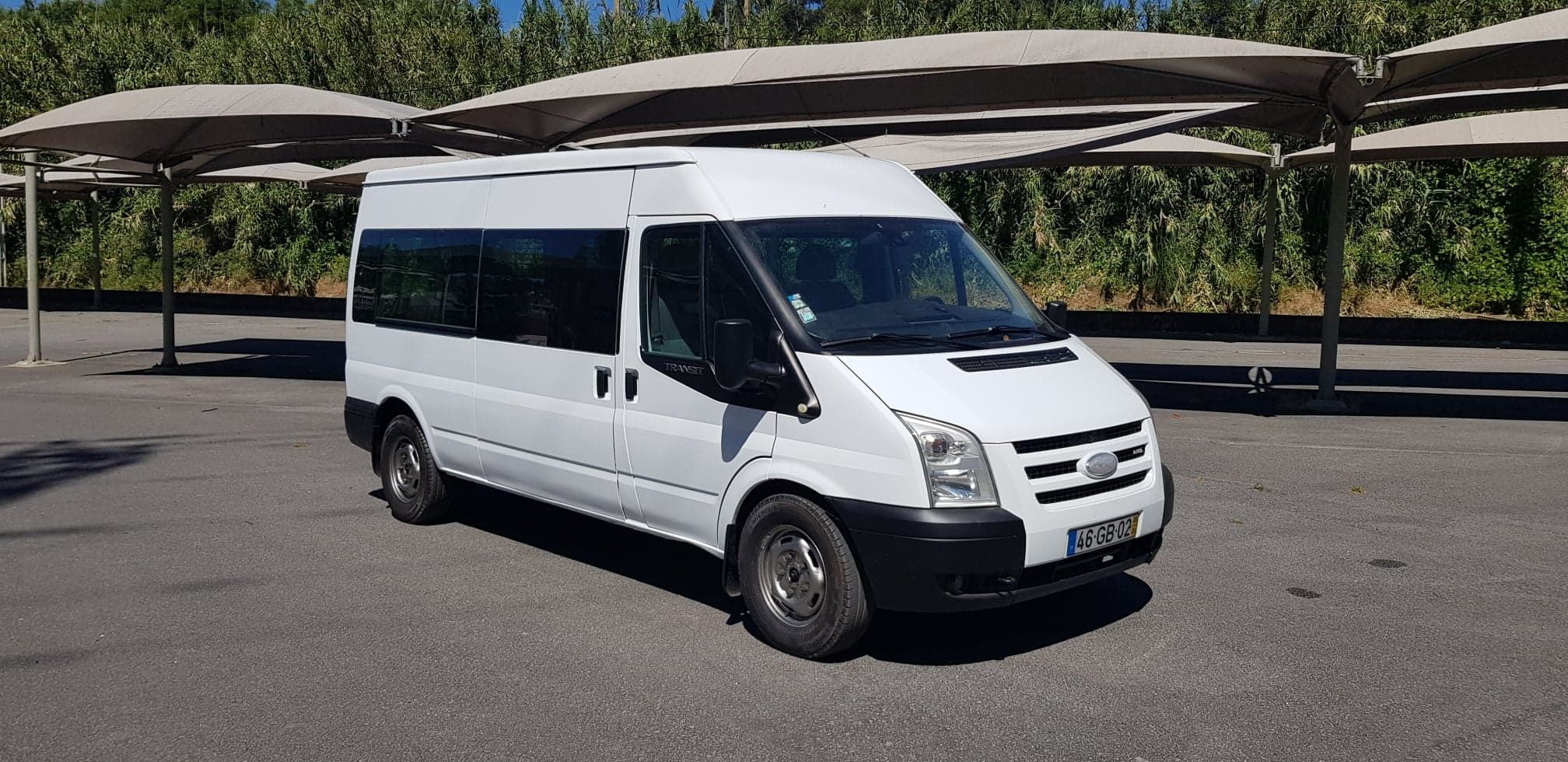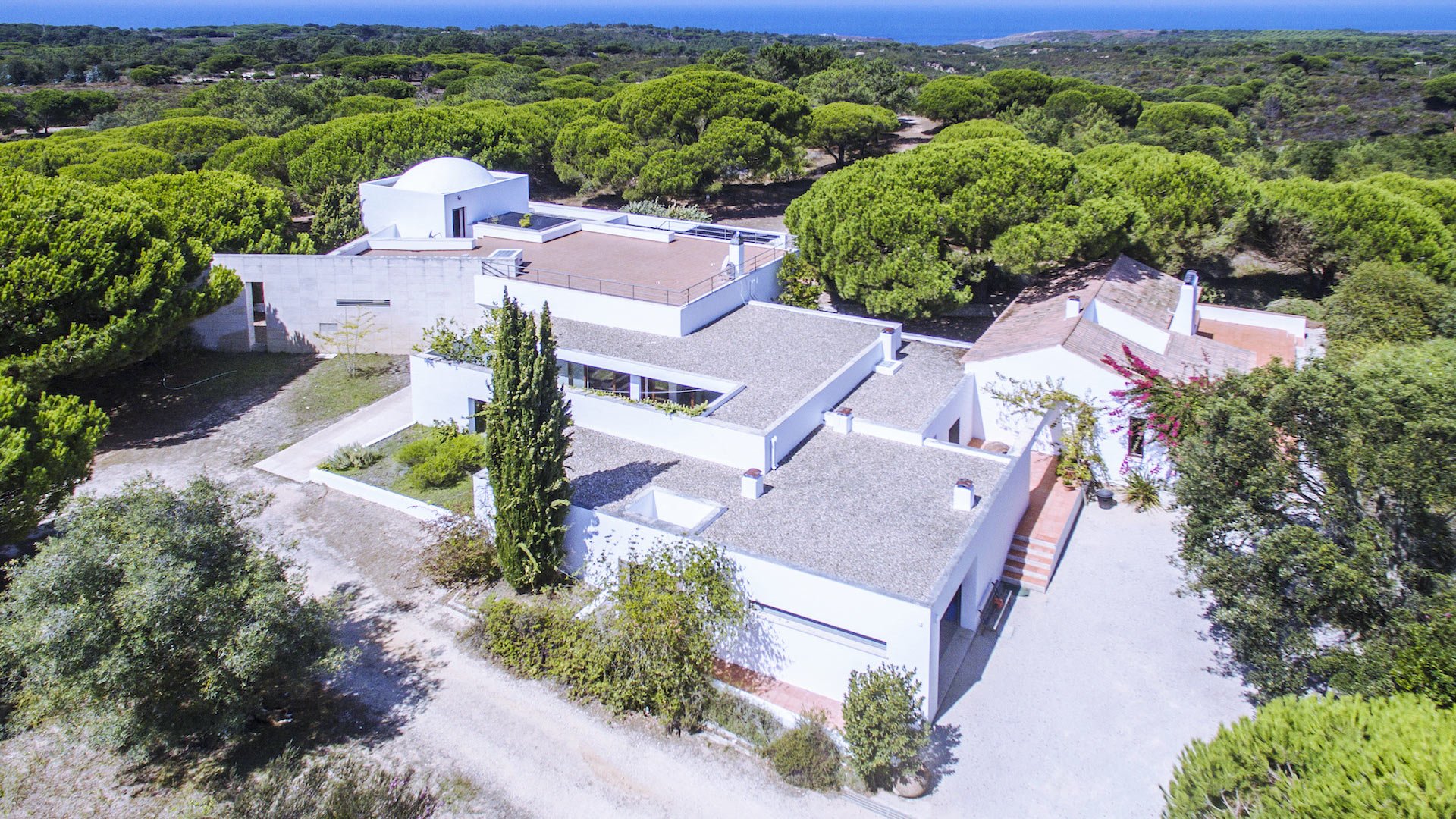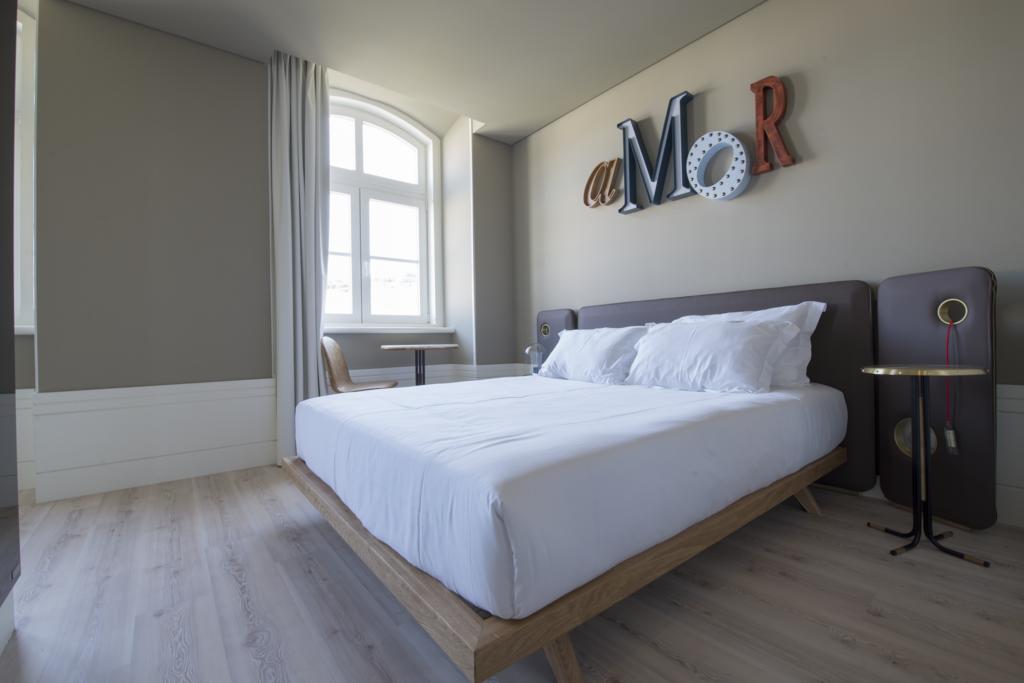To visit Faro
Many vacationers in the Algarve travel to Faro, which is often the starting point for a grand tour of southern Portugal. Faro has been the region’s capital since 1756 and retains the appeal of an ancient walled city. Located in the south of the country, Faro is only a few dozen kilometers from the Spanish border and lies on the banks of the Ria Formosa. Visitors come to see the sights of the old quarter such as the Chapel of the Bones under the Carmo church, the brightly decorated chimneys of the surrounding villages or the walk around the harbor to taste the cuisine of southern Portugal. It’s also not a bad place for shopping.Find on this page all the necessary information to visit Faro and answer your questions: what to do in Faro? What to see in Faro? Where to sleep in Faro?
 There are many accommodations available in the Algarve but one usually wants to find the best and this is quite normal. So I have prepared below a selection of the best hotels in Faro, you just have to choose and book according to what you are looking for.For those who wish to book a luxury villa in the Algarve, I invite you to click in the column on the image or the corresponding link. This link will take you to a website that specializes in luxury villas throughout Europe. These are luxury villas in the Algarve with the possibility of heated pools, cooks, staff and others, so you should expect prices accordingly but some will prefer this option, it is available on Essencial Portugal.
There are many accommodations available in the Algarve but one usually wants to find the best and this is quite normal. So I have prepared below a selection of the best hotels in Faro, you just have to choose and book according to what you are looking for.For those who wish to book a luxury villa in the Algarve, I invite you to click in the column on the image or the corresponding link. This link will take you to a website that specializes in luxury villas throughout Europe. These are luxury villas in the Algarve with the possibility of heated pools, cooks, staff and others, so you should expect prices accordingly but some will prefer this option, it is available on Essencial Portugal.
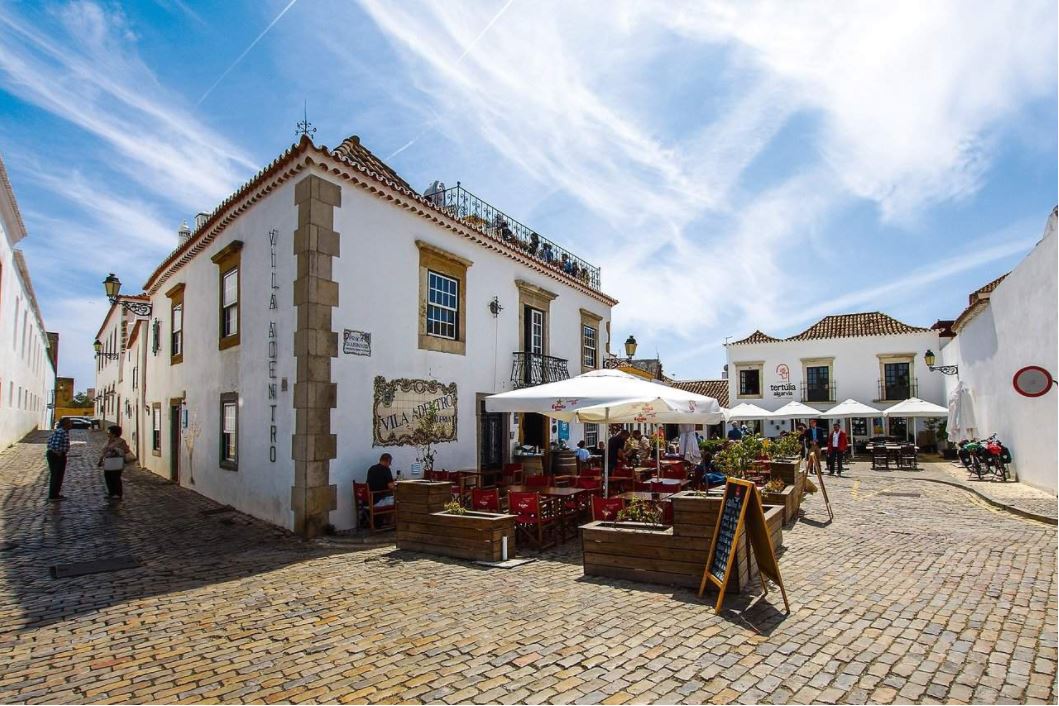
Guided tours and activities in Faro, Portugal
For those who don’t have time or don’t want to plan too far in advance, you can book different activities or guided tours of Faro directly online. The process only takes a few minutes and cancellation of your reservations is free, so you can book safely.Below you will find my selection of guided tours of Faro but also of activities that have been rated the best by those who have been there before you. I have selected activities for which the guides are English-speaking, which will allow you to enjoy your visit to Faro even more.Public transportation in Faro
The easiest way to get around Faro is to use the buses. The network has 19 lines, including two urban areas and one suburban area. You can buy a ticket at the entrance of the bus from the driver or in the tobacco shops at the stops. Bus fares in Faro are as follows (please note that prices may vary by a few cents):- Zone 1 costs 1,10 EUR
- Zone 2 costs 1,70 EUR
- A day pass, which is only valid in zone 1, costs 5,30 EUR.
- There are ticket offices at the Forum Algarve shopping center, the University of Algarve and the Faro bus station where you can also buy your bus tickets.
- Bus lines that serve Lagos, Portimão and other major cities.
- Regional trains that run throughout the Algarve. Going to Lagos by train from Faro costs 7.30 EUR, an affordable rate.
Best hotels in Faro in the Algarve
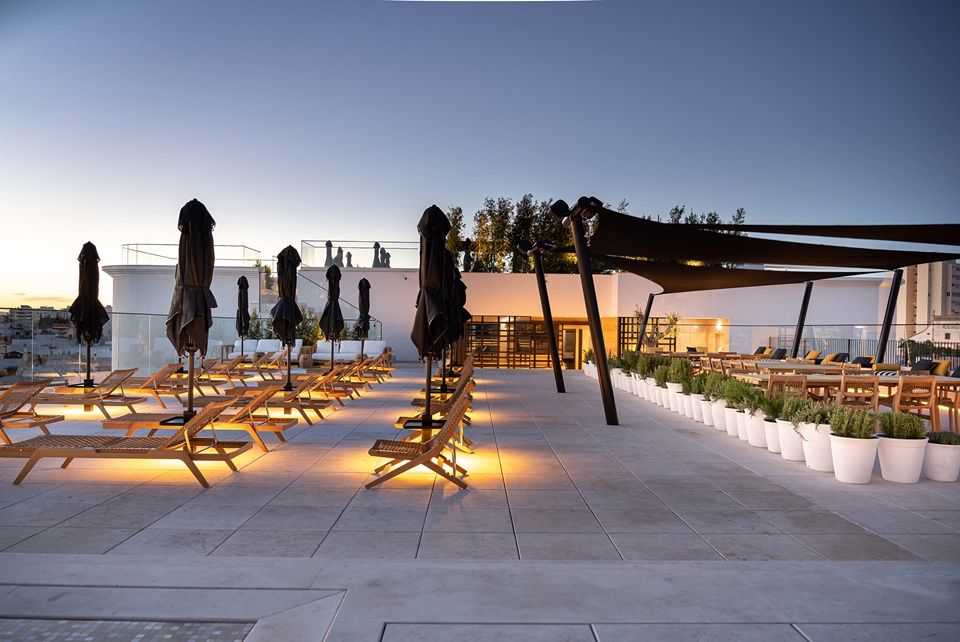 There are many accommodations available in the Algarve but one usually wants to find the best and this is quite normal. So I have prepared below a selection of the best hotels in Faro, you just have to choose and book according to what you are looking for.For those who wish to book a luxury villa in the Algarve, I invite you to click in the column on the image or the corresponding link. This link will take you to a website that specializes in luxury villas throughout Europe. These are luxury villas in the Algarve with the possibility of heated pools, cooks, staff and others, so you should expect prices accordingly but some will prefer this option, it is available on Essencial Portugal.
There are many accommodations available in the Algarve but one usually wants to find the best and this is quite normal. So I have prepared below a selection of the best hotels in Faro, you just have to choose and book according to what you are looking for.For those who wish to book a luxury villa in the Algarve, I invite you to click in the column on the image or the corresponding link. This link will take you to a website that specializes in luxury villas throughout Europe. These are luxury villas in the Algarve with the possibility of heated pools, cooks, staff and others, so you should expect prices accordingly but some will prefer this option, it is available on Essencial Portugal.Restaurants in Faro
Faro is a large city in the Algarve by Portuguese standards and there are cafes or restaurants for every taste. Around the city of Faro, the capital of the Algarve, most restaurants are open until 9pm, but you can eat later in the city. You can usually have breakfast until 10am and lunch until 2 or 3pm.In the typical restaurants, you can easily find local specialties. The typical dishes of the Algarve prepared in the cataplana, a round-bottomed pan with a very tight lid to preserve all the flavors. The “marisqueiras” serve fish and seafood for which Faro is world famous. For example, you can easily find the cod specialty “bacalau” prepared in hundreds of ways, but also the fish soup “caldeirada” and sardines. The Portuguese green wine par excellence, vinho verde, is light and refreshing, so it’s worth trying.The prices of the restaurants in Faro depend on its class but you can expect to pay around 40€ for a full meal with a glass of wine. In more typical and hidden places, you can eat very well for 25€. For fast food lovers, you can of course find it in Faro as anywhere else. Be careful, the portions are usually very generous, so don’t hesitate to order “uma meia dose”, i.e. half a portion or to take a dish for two.You will find below some addresses of the best restaurants in Faro.Tertulia Algarvia restaurant in Faro
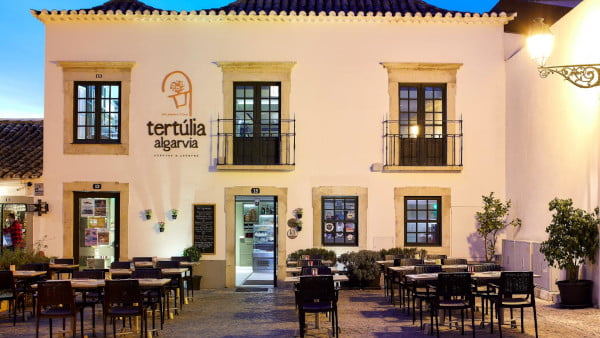 The greatest resources of the sea are used in the Algarvian cuisine, which is largely inspired by the flavors of its descendants. The cataplana, a characteristic spherical metal tagine in which a fragrant fish stew is prepared, is the most famous local dish. The Tertulia Algarvia restaurant in Faro takes local food seriously, and its version, which is full of octopus, cockles and delicate sweet potatoes, is a must try.
The greatest resources of the sea are used in the Algarvian cuisine, which is largely inspired by the flavors of its descendants. The cataplana, a characteristic spherical metal tagine in which a fragrant fish stew is prepared, is the most famous local dish. The Tertulia Algarvia restaurant in Faro takes local food seriously, and its version, which is full of octopus, cockles and delicate sweet potatoes, is a must try.Ria Formosa Restaurant in Faro
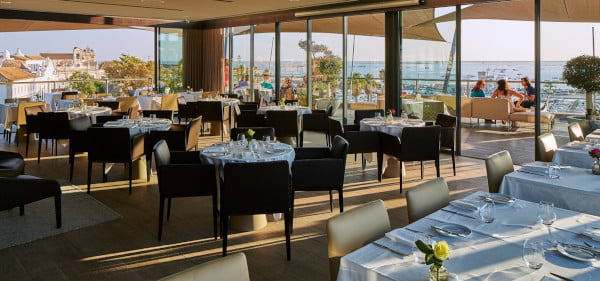 Look no further if you want panoramic views with your main course. The Ria Formosa restaurant, perched atop the Faro Hotel, offers stunning views of the city’s harbor and the national park. It offers a fantastic seafood menu, as well as delicious Portuguese steaks.
Look no further if you want panoramic views with your main course. The Ria Formosa restaurant, perched atop the Faro Hotel, offers stunning views of the city’s harbor and the national park. It offers a fantastic seafood menu, as well as delicious Portuguese steaks.2 Irmãos restaurant in Faro
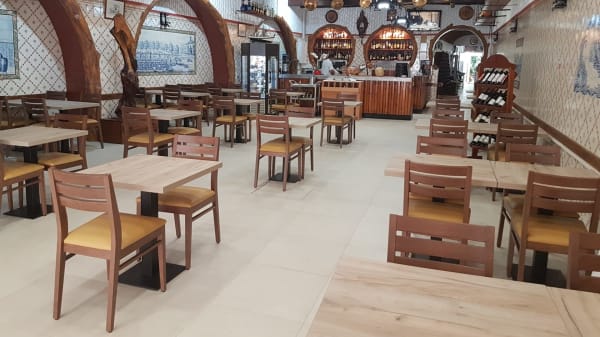 This is one of the oldest restaurants in Faro, having opened in 1925. The atmosphere is as authentically Portuguese as possible, with walls covered in azulejos and traditional beams. Typical Portuguese dishes are served, featuring traditional Algarve ingredients and culinary skills. In the patio, surrounded by lemon and orange trees, enjoy Iberian pork cheeks or grilled octopus drizzled with olive oil.
This is one of the oldest restaurants in Faro, having opened in 1925. The atmosphere is as authentically Portuguese as possible, with walls covered in azulejos and traditional beams. Typical Portuguese dishes are served, featuring traditional Algarve ingredients and culinary skills. In the patio, surrounded by lemon and orange trees, enjoy Iberian pork cheeks or grilled octopus drizzled with olive oil.Pigs and Cows restaurant in Faro
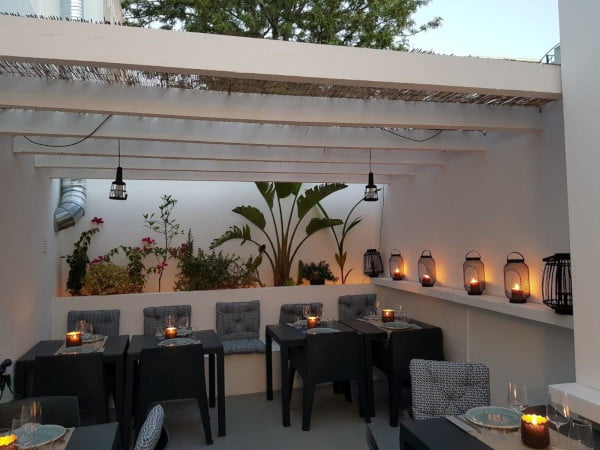 The chefs at Pigs and Cows have developed a combination of traditional Portuguese cuisine with French methods and flavors from around the world, inspired by their travels. This restaurant in the north of Faro’s old town has an open kitchen and a small, intimate dining room with a friendly atmosphere. The menu changes daily, but specialties include duck confit, sea bass ceviche and Creole octopus rougaille.
The chefs at Pigs and Cows have developed a combination of traditional Portuguese cuisine with French methods and flavors from around the world, inspired by their travels. This restaurant in the north of Faro’s old town has an open kitchen and a small, intimate dining room with a friendly atmosphere. The menu changes daily, but specialties include duck confit, sea bass ceviche and Creole octopus rougaille.Cafe Janoca restaurant in Faro
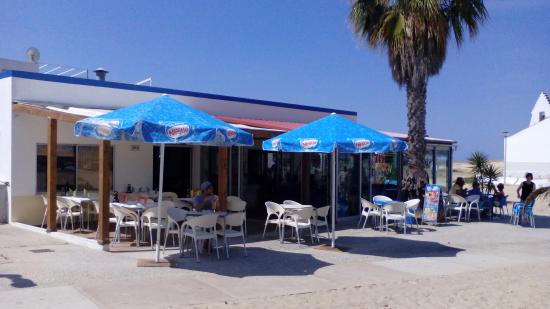 The proximity to the beach and the archipelago of islands “Ria Formosa” are two beautiful things to enjoy during your vacation in Faro in the Algarve. On one of these islands, Ilha da Culatra, is the restaurant Café Janoca which offers a relaxed beach hut atmosphere where you feel at home. It offers seafood at a good price, as well as fresh fish of the day.
The proximity to the beach and the archipelago of islands “Ria Formosa” are two beautiful things to enjoy during your vacation in Faro in the Algarve. On one of these islands, Ilha da Culatra, is the restaurant Café Janoca which offers a relaxed beach hut atmosphere where you feel at home. It offers seafood at a good price, as well as fresh fish of the day.8 Tapas restaurant in Faro
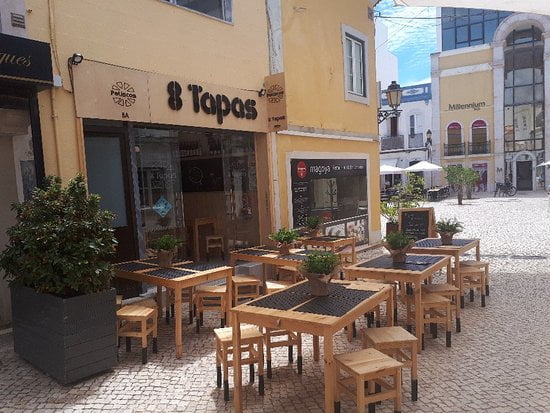 Sometimes you just want to have a snack without necessarily having a full meal. If that’s the case, then Faro 8 Tapas is the restaurant for you. It’s conveniently located on a cobblestone street in the old town and specializes in artisanal cheeses and meats in tapas form. You will be able to taste many tastings like the bruschetta of marinated anchovies with grilled vegetables. To accompany all this, discover a wine list very provided and appreciable.
Sometimes you just want to have a snack without necessarily having a full meal. If that’s the case, then Faro 8 Tapas is the restaurant for you. It’s conveniently located on a cobblestone street in the old town and specializes in artisanal cheeses and meats in tapas form. You will be able to taste many tastings like the bruschetta of marinated anchovies with grilled vegetables. To accompany all this, discover a wine list very provided and appreciable.Shopping in Faro
The capital of the Algarve has many stores. There are both large shopping malls and small stores selling local crafts. One of the largest and most beautiful shopping centers, not only in Faro but in the entire region, is the Algarve Forum (more than 200 stores, cinema, restaurants). It is located near the airport, at the entrance to the city in the direction of Albufeira, along route 125. In the center of Faro, most stores are concentrated around the pedestrian street Rua Santa António, and in the old town near the cathedral.Discounts are indicated by the “saldos” in the windows. Prices in Faro are slightly higher than elsewhere in Portugal, but much lower than in the rest of Europe. Small stores sell attractive, quality handicrafts, such as leather goods, knitwear, textiles and lace.Beautiful antiques are on sale at the Vila Adento, in the Afonso III square in the old town. A great souvenir to bring back would be Portuguese tiles. Cork products, such as handbags, wallets and even magnets, are another classic Faro gift.The big shopping centers open at 10 am and stay open until midnight, while the small stores open from 9 am to 7 pm. Many of them close for lunch between 1 and 3 pm.The markets (7am-12pm) sell everything from food to clothing to ceramics (including the famous Portuguese roosters). The most interesting market in Faro is in Estoi, every second Sunday of the month.Weather in Faro
The best time to visit Faro is early autumn, although the Algarve’s temperatures are still pleasant in summer. During July and August the days can be quite hot but all the conditions are there for sunbathing. In June, the water of the Atlantic Ocean is still cold and only the bravest will be able to swim. It can rain from November onwards and the winter will be wet with plenty of sun during the day. During the winter in Faro, there is no snow or frost.
Things to see in Faro
The best visit to Faro is one you make on foot on your own. The historic center or old town of Faro is a beautifully preserved 18th century corner of Portugal, with cobblestone streets and old buildings influenced by Moorish culture. To give you some pointers, below is a list of things to see in Faro and you can scroll back up to the top of the page to book the best guided tours, private tours or activities with an English speaking guide in Faro.Cathedral of Faro
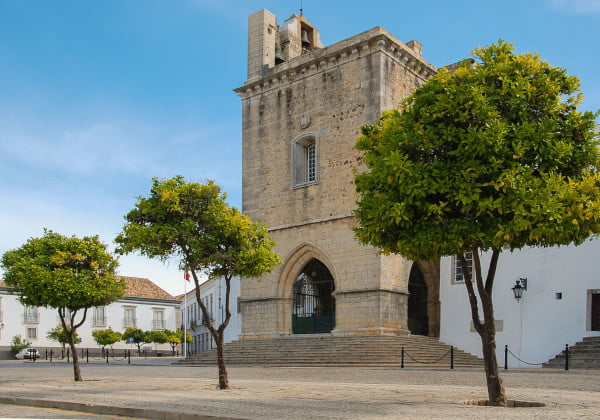 This cathedral was inaugurated in 1251, only two years after the reconquest of the city from the Moors. This explains the military aspect of the cathedral’s facade, which is dominated by a square Gothic tower. This tower, which you can climb to admire the streets of Faro and the lagoon, is the only one that has survived from the mid-13th century until today. The rest of the building has undergone significant changes since it was almost completely destroyed by the English attack in 1596. In the 17th-18th centuries, the cathedral’s interiors were decorated with luxurious gilded wood panels and colorful azulejos, which were gaining in popularity.
This cathedral was inaugurated in 1251, only two years after the reconquest of the city from the Moors. This explains the military aspect of the cathedral’s facade, which is dominated by a square Gothic tower. This tower, which you can climb to admire the streets of Faro and the lagoon, is the only one that has survived from the mid-13th century until today. The rest of the building has undergone significant changes since it was almost completely destroyed by the English attack in 1596. In the 17th-18th centuries, the cathedral’s interiors were decorated with luxurious gilded wood panels and colorful azulejos, which were gaining in popularity.Arco Da Vila
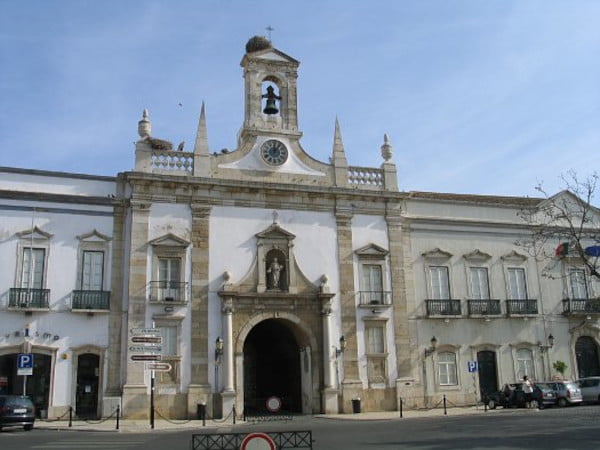 This opening in the wall surrounding the Faro dates back to Moorish times, and when you walk through the gate, you can see the 1,000-year-old masonry. But it wasn’t until 1812, when Italian architect Francesco Saverio Fabri rebuilt the gateway to the old town, giving it a striking neoclassical look, that the Arco da Vila acquired its modern appearance. The upper part of the entrance is decorated by a statue of St. Thomas Aquinas. Above the sculpture is a beautiful pediment with balustrades, spires and a bell tower, on top of which storks have built a nest.
This opening in the wall surrounding the Faro dates back to Moorish times, and when you walk through the gate, you can see the 1,000-year-old masonry. But it wasn’t until 1812, when Italian architect Francesco Saverio Fabri rebuilt the gateway to the old town, giving it a striking neoclassical look, that the Arco da Vila acquired its modern appearance. The upper part of the entrance is decorated by a statue of St. Thomas Aquinas. Above the sculpture is a beautiful pediment with balustrades, spires and a bell tower, on top of which storks have built a nest.Old town
The old town is very different from the rest of Faro: whitewashed houses with terracotta tile roofs, small intimate squares with small restaurants and the calçada, the famous mosaic pavement of Portugal. Don’t hesitate to stop at the beautiful square in front of the cathedral, with its rows of orange trees. The episcopal palace located on this square is the former seat of the bishops of Faro and dates from the 16th century. Exhibitions are sometimes held inside the palace and, even if not, check out the oriental-style library and the tiled staircase inside.Beaches of the island
The outer islands of Faro’s lagoon are only accessible by boat, so the golden sandy beaches are not besieged by crowds eager to swim and sunbathe. On Ilha da Culatra, far from the lighthouse and the small isolated communities, you won’t find any sign of life on quieter days. You can see Ilha da Culatra or Ilha Barreta (also known as Ilha Deserta) on a guided boat tour. If you want to spend the whole day on the beach of one of the islands, you can arrange a round trip by boat.Municipal Museum of Faro
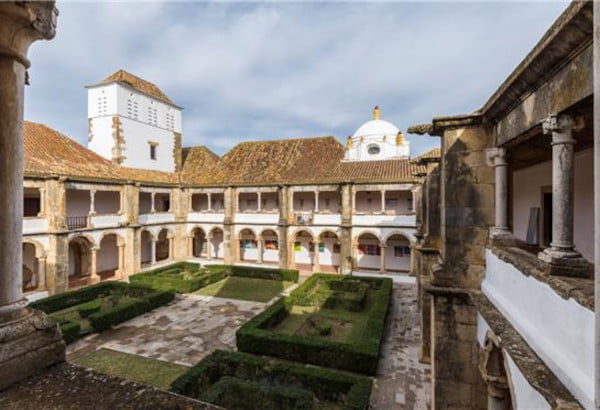 The Municipal Museum of Faro is one of the oldest museums in the Algarve. It was inaugurated in 1894 to mark the 500th anniversary of the birth of Henry the Navigator. In 1969, the museum moved to its current building, dating from the 16th century, formerly the convent of Nossa Senhora Assunção. Most of the museum’s collection belongs to the Roman period, with several stones bearing engraved inscriptions, a second-century mosaic and a pair of marble busts of the Roman matron Agrippina and the emperor Hadrian. The rest of the pieces on display are mostly religious artworks, collected from monasteries and churches dissolved in Faro and the surrounding area.
The Municipal Museum of Faro is one of the oldest museums in the Algarve. It was inaugurated in 1894 to mark the 500th anniversary of the birth of Henry the Navigator. In 1969, the museum moved to its current building, dating from the 16th century, formerly the convent of Nossa Senhora Assunção. Most of the museum’s collection belongs to the Roman period, with several stones bearing engraved inscriptions, a second-century mosaic and a pair of marble busts of the Roman matron Agrippina and the emperor Hadrian. The rest of the pieces on display are mostly religious artworks, collected from monasteries and churches dissolved in Faro and the surrounding area.Maritime Museum of Admiral Ramalho Ortigao
Don’t you want to know what life was like in the Algarve before it became a major tourist destination? And the Algarve only lived by the sea. The Admiral Ramalho Ortigao Maritime Museum, dating from 1931 and located in the Port Authority building, will tell you all about it. The museum presents the marine life of the region, such as tuna, squid and sardines, the history of Faro’s once thriving fishing industry, as well as all sorts of navigational aids and boat models.The Roman ruins of Milreu
On this hill, less than ten minutes from Faro, hundreds of years of history await you. This history began in the 300s when a luxurious Roman villa was built here. Today, unfortunately, little of it remains. The foundations and first floors of many buildings have been preserved, however. You can also see the beautiful mosaic of fish motifs, which seems almost intact. There were agricultural buildings such as oil and wine presses and even a temple that was converted into a Christian place of worship in the 500s. Later, the Moors also used the site, the remains of a Muslim cemetery testifying to their “occupation”.Eshtoy Palace
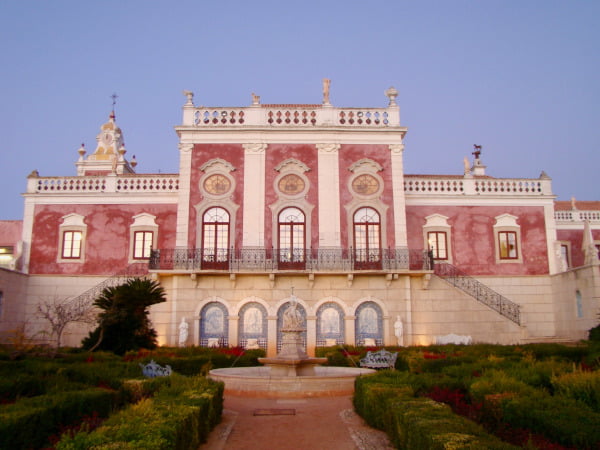 Next to the Roman ruins is a magnificent palace, built in 1840. Its style could be described as an imitation of the rococo: inside, you will find frescoes framed by numerous stucco decorations, and in the terraced gardens, a monumental staircase and a beautiful pavilion decorated with blue and white azulejo tiles. The complex had been in a state of disrepair and abandonment for several decades, but a few years ago the palace was carefully restored and reopened. Today it serves as a historic hotel. You can come here not only as a hotel guest, but also as a tourist, just to see the palace and its exquisite gardens.
Next to the Roman ruins is a magnificent palace, built in 1840. Its style could be described as an imitation of the rococo: inside, you will find frescoes framed by numerous stucco decorations, and in the terraced gardens, a monumental staircase and a beautiful pavilion decorated with blue and white azulejo tiles. The complex had been in a state of disrepair and abandonment for several decades, but a few years ago the palace was carefully restored and reopened. Today it serves as a historic hotel. You can come here not only as a hotel guest, but also as a tourist, just to see the palace and its exquisite gardens. Related Articles
- Visit Evora in Portugal
Evora is one of the most beautiful cities in Portugal . Walking along its centre,…
- Visit Tomar in Portugal
Between the two rivers Tagus and Mondego in the 12th century, the Templars built a…
- Visit Lisbon by bus
Visiting Lisbon by bus is probably one of the favourite activities of tourists in…




